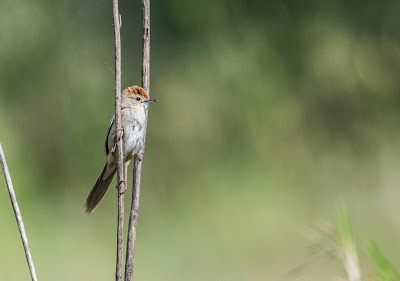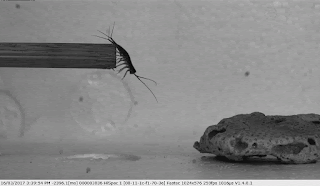Echidna Biomechanics

Ever wonder what an echidna does with all its time?
The echidna (Tachyglossus aculeatus) is a spiny ball of monotreme that looks something like this. Those spines are sharp mind you, and often leave a weird irritating/itchy marks on your skin after they stab into you. Given that its close relative the Platypus (Ornithorhynchus anatinus) has poisonous spurs on its hind limbs makes me wonder whether those spines aren't filled with something nasty. My point is that pretty much nothing is going to try to eat an echidna. Some germans once wrote a paper on what happens when you do. They came across the body of one of Australia's top predators, and one of my favourite animals, the Perentie (Varanus giganteus) which had the brave, yet somehow transparently stupid idea, to attempt eat an echidna whole and had in doing so met its own demise.
 |
| The photo is from Kirschner et al. (1996), via Darren Naish's blog . |
So the echidna is pretty much invenerable to predation, and presumably also asteroid strikes, lasers, paper cuts and anything less than a direct thermonuclear attack. So the question then arises, if you have nothing to fear what do you spend you afternoons doing? Hanging out by the local tree hollow? finding only the finest and tastiest termites available? The question, I am sure, has sometimes kept you up at night. Infact the question is all the more important when you consider that these little critters, with an Australia wide distribution, spend much of their time digging up the ground after termites, and in doing so move quite a bit of dirt. How much? No idea, but enough that these guys can start to change the profile of the landscape, putting them in that neat category of animals called ecosystem engineers. So if they are moving a bunch of dirt around, we ought to know about it.
 To answer this question I teamed up with two echidna researchers, Christine Cooper (Curtin), and my old PhD supervisor Phil Withers (UWA). They were looking at the thermoregulation in echidnas (which is interesting in itself, since they are half mammal half lizard, white hot balls of spikey terror) - which was a great opportunity to test out some sensors I had been working on. When I say I was working on them, I mean another academic Phil Terrill from the school of engineering at UQ was working on them. I had originally anticipated using these sensors on some large varanid lizards, but it turns out that lizards are a giant pain in the ass to work with since they seem to travel forever, in no apparent direction, and bury themselves under piles of trees, rocks and dirt which make retrieving the sensors a little harder. Echidnas would surely be easier.
To answer this question I teamed up with two echidna researchers, Christine Cooper (Curtin), and my old PhD supervisor Phil Withers (UWA). They were looking at the thermoregulation in echidnas (which is interesting in itself, since they are half mammal half lizard, white hot balls of spikey terror) - which was a great opportunity to test out some sensors I had been working on. When I say I was working on them, I mean another academic Phil Terrill from the school of engineering at UQ was working on them. I had originally anticipated using these sensors on some large varanid lizards, but it turns out that lizards are a giant pain in the ass to work with since they seem to travel forever, in no apparent direction, and bury themselves under piles of trees, rocks and dirt which make retrieving the sensors a little harder. Echidnas would surely be easier.It would be a week long peek into the private life of an echidna.
Turns out life is of course not that simple, our echidnas, likely pissed at our decorating them with sensors, antennas, and what not, retreated to the deepest and darkest caves humanly possible, only to emerge in the hours of the darkest nights, where they would attempt to evade capture by three sleepy
and exhausted scientists.
 They were very nearly successful and many nights we were forced to climb into their lairs to change the batteries on their back, or change sensors over. But in the end we did get some data, and since this is a biomechanics blog we are going to focus on the biomechanics data. The first and most important thing i did before releasing the echidnas was to perform the sacred ritual among biomechanists, the 'Calibration dance'. This dance has many forms, each unique to the scientist that devises them. They have, in my observations as a biomechanist, two equally important and fundamental functions. Firstly, they must relate the position and movement reference frame to a recording cameras, this would also be important for synchronising accelerometer signals to the cameras later. And secondly, some might argue more importantly, they must make the person performing the calibration dance look as ridiculous as possible. And so it was with great fortune that I was able to convince my co-researcher Christine Cooper to perform this sacred dance with the echidnas.
They were very nearly successful and many nights we were forced to climb into their lairs to change the batteries on their back, or change sensors over. But in the end we did get some data, and since this is a biomechanics blog we are going to focus on the biomechanics data. The first and most important thing i did before releasing the echidnas was to perform the sacred ritual among biomechanists, the 'Calibration dance'. This dance has many forms, each unique to the scientist that devises them. They have, in my observations as a biomechanist, two equally important and fundamental functions. Firstly, they must relate the position and movement reference frame to a recording cameras, this would also be important for synchronising accelerometer signals to the cameras later. And secondly, some might argue more importantly, they must make the person performing the calibration dance look as ridiculous as possible. And so it was with great fortune that I was able to convince my co-researcher Christine Cooper to perform this sacred dance with the echidnas.| Click to make Christine bigger |
Digging
http://i.imgur.com/99JLPNX.gifv
 We then divided the echidnas day in 30 second chunks, and used these signature accelerometer traces to assign to each short interval of time to a particular activity and in doing so work out exactly what the echidna was doing with its day.
We then divided the echidnas day in 30 second chunks, and used these signature accelerometer traces to assign to each short interval of time to a particular activity and in doing so work out exactly what the echidna was doing with its day.And what does an echidna do with its day??
It turns out not much. Many of our echidnas spend as much as 80% of their day hiding in rock caves, thinking about whatever it is that echidnas think about, ants probably.
 But from these short periods of activity we were able to get some interesting biomechanical data. Analysing the chunks of time when it was moving, and running a simple fourier analysis allowed us to determine the stride frequency of the echidna at different periods of the day. With some knowledge of the stride length of the echidna, we should be able to work out things like speed during different activities, and more. This will all help us figure out the private life of echidnas.
But from these short periods of activity we were able to get some interesting biomechanical data. Analysing the chunks of time when it was moving, and running a simple fourier analysis allowed us to determine the stride frequency of the echidna at different periods of the day. With some knowledge of the stride length of the echidna, we should be able to work out things like speed during different activities, and more. This will all help us figure out the private life of echidnas.



Comments
Post a Comment